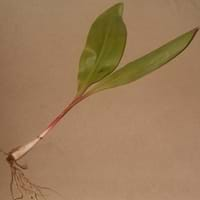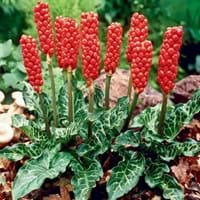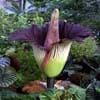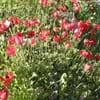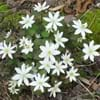Life Span
Perennial
Perennial
Type
Bulb or Corm or Tuber
Bulb or Corm or Tuber
Origin
World/Pandemic, North America, Europe, Northern Europe, Russia/Siberia, Northern Africa, Asia, India
Southern Europe, Western Europe
Types
Not Available
Not Available
Habitat
Slopes, Woods
gardens, Grassland, Roadsides
USDA Hardiness Zone
4-9
6-9
Habit
Clump-Forming
Clump-Forming
Flower Color
Gold
White, Light Yellow, Yellow green
Flower Color Modifier
Bicolor
Bicolor
Fruit Color
Yellow green
Red
Leaf Color in Spring
Light Green
White, Green
Leaf Color in Summer
Light Green
Light Green
Leaf Color in Fall
Several shades of Green
Several shades of Green
Leaf Color in Winter
Light Green
Light Green
Leaf Shape
Lanceolate
Heart-shaped
Plant Season
Summer
Spring, Fall, Winter
Sunlight
Full Sun, Partial Sun
Partial Sun, Partial shade
Growth Rate
Medium
Medium
Type of Soil
Loam, Sand
Loam
The pH of Soil
Neutral
Acidic, Neutral
Soil Drainage
Well drained
Well drained
Bloom Time
Spring, Late Spring, Early Summer, Summer, Late Summer, Early Fall
Late Spring, Early Summer
Tolerances
Drought
Drought
Where to Plant?
Ground
Ground
How to Plant?
Seedlings
Seedlings, Stem Planting
Plant Maintenance
Medium
Medium
Watering Requirements
Average Water Needs, Do Not over Water, Requires regular watering
Needs 2-3 times watering per week, Requires watering in the growing season
In Summer
Lots of watering
Lots of watering
In Spring
Moderate
Moderate
In Winter
Average Water
Average Water
Soil pH
Neutral
Acidic, Neutral
Soil Type
Loam, Sand
Loam
Soil Drainage Capacity
Well drained
Well drained
Sun Exposure
Full Sun, Partial Sun
Partial Sun, Partial shade
Pruning
Remove damaged leaves, Remove dead branches, Remove dead leaves
No pruning needed
Fertilizers
All-Purpose Liquid Fertilizer
All-Purpose Liquid Fertilizer
Pests and Diseases
Red blotch
Pests and diseases free, Red blotch
Plant Tolerance
Drought
Drought
Flower Petal Number
Single
Single
Fragrant Flower
Not Available
Yes
Fragrant Fruit
Not Available
No
Fragrant Leaf
Not Available
No
Fragrant Bark/Stem
Yes
No
Foliage Texture
Medium
Bold
Foliage Sheen
Matte
Glossy
Attracts
Leafminer
Bees, Butterflies
Allergy
Not Available
Skin irritation
Aesthetic Uses
Not Used For Aesthetic Purpose
Beautification, Showy Purposes
Beauty Benefits
Not Available
Not Available
Environmental Uses
Air purification
Air purification
Medicinal Uses
Emetic
No Medicinal Use
Part of Plant Used
Flowers, Leaves, Root
Flowers, Fruits
Other Uses
Repellent, Used as insect repellent
Showy Purposes, Used as Ornamental plant
Used As Indoor Plant
No
No
Used As Outdoor Plant
Yes
Yes
Garden Design
Not Available
Groundcover, Mixed Border, Wildflower
Botanical Name
ALLIUM tricoccum
ARUM italicum
Common Name
Ramps, Wild Leek
Italian Arum, Lords-and-Ladies
In Hindi
Wild Leek
इतालवी एरम
In German
wilder Lauch
Italienisch Arum
In French
Leek sauvage
Arum italienne
In Spanish
puerro silvestre
Arum italiana
In Greek
άγρια Πράσο
Ιταλικά Arum
In Portuguese
Leek selvagem
Arum italiano
In Polish
Dziki Leek
włoski Arum
In Latin
Leek Wild
Italian Arum
Phylum
Tracheophyta
Tracheophyta
Class
Magnoliopsida
Liliopsida
Order
Asparagales
Alismatales
Clade
Angiosperms, Monocots
Angiosperms, Monocots
Tribe
Not Available
Not Available
Subfamily
Not Available
Aroideae
Number of Species
Not Available
Difference Between Wild Leek and Italian Arum
If you are confused whether Wild Leek or Italian Arum are same, here are some features about those plants to help you choose better. Many people think that these two plants have the same characteristics, but one can see Wild Leek and Italian Arum Information and learn more about it. Fertilizers required for proper growth of Wild Leek are All-Purpose Liquid Fertilizer, whereas for Italian Arum fertilizers required are All-Purpose Liquid Fertilizer. Hence, one should know the basic difference between Wild Leek and Italian Arum if you are planning to have them in your garden to enhance its beauty.
<
Flowering PlantsImportance of Wild Leek and Italian Arum
Want to have the most appropriate plant for your garden? You might want to know the importance of Wild Leek and Italian Arum. Basically, these two plants vary in many aspects. Compare Wild Leek and Italian Arum as they differ in many characteristics such as their life, care, benefits, facts, etc. Every gardener must at least have the slightest clue about the plants he wants to plant in his garden. Compare their benefits, which differ in many ways like facts and uses. The medicinal use of Wild Leek is Emetic whereas of Italian Arum is No Medicinal Use. Wild Leek has beauty benefits as follows: Not Available while Italian Arum has beauty benefits as follows: Not Available.
Compare Facts of Wild Leek vs Italian Arum
How to choose the best garden plant for your garden depending upon its facts? Here garden plant comparison will help you to solve this query. Compare the facts of Wild Leek vs Italian Arum and know which one to choose. As garden plants have benefits and other uses, allergy is also a major drawback of plants for some people. Allergic reactions of Wild Leek are Not Available whereas of Italian Arum have Skin irritation respectively. Having a fruit bearing plant in your garden can be a plus point of your garden. Wild Leek has no showy fruits and Italian Arum has showy fruits. Also Wild Leek is not flowering and Italian Arum is not flowering . You can compare Wild Leek and Italian Arum facts and facts of other plants too.
